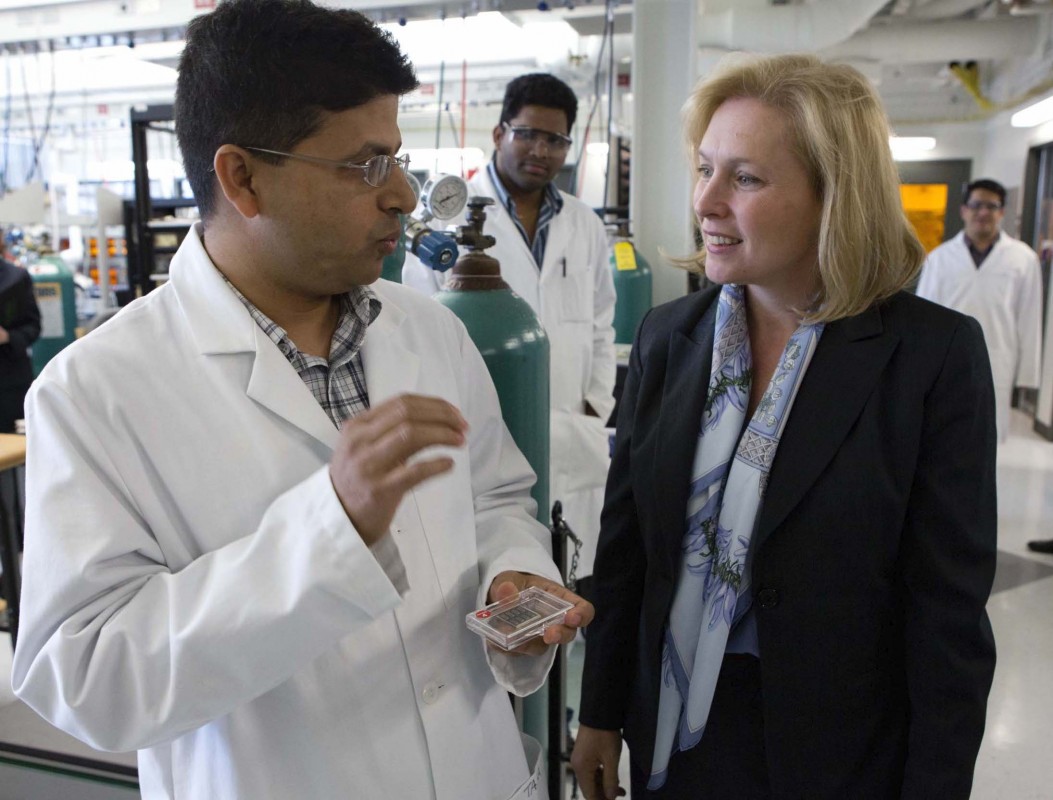New method for ultrathin films could lower costs of solar cells, other devices
Binghamton University researcher publishes study on '2D' semiconducting material

A researcher at Binghamton University’s Thomas J. Watson School of Engineering and Applied Science has found a new method for producing ultrathin films made from specific compounds, and that discovery could lead to lower-cost solar cells and other technological advances.
In a study recently published in Materials Research Express, electrical and computer engineering Assistant Professor Tara P. Dhakal outlined a way to grow tin sulfide into a “two-dimensional” semiconducting material. The technique, known as sputtering, uses exposure of the tin to sulfur gas.
Dhakal — who became the director of the University’s Center for Autonomous Solar Power (CASP) in 2018 — is excited about the possibilities for the technique.
“The application of 2D materials can be in many things,” he said. “It can be in transistors because they have relevant properties and are also very thin. It can have applications in solar cells and maybe energy storage. The exciting part of this research is that, with the same approach, we probably could make other types of 2D materials as well.”
While he believes that tin sulfide will be the most commercially attractive for solar panels and microswitches, the production method also could create 2D films made of monosulfides such as tungsten sulfide, manganese sulfide and similar materials for use in other devices.
One aspect that makes the technique particularly attractive, Dhakal said, is the minimum of energy expenditure needed to create the films, thus cutting costs for the final product.
“There are many 2D materials we think we can do with this process,” he said. “We want to tweak the process so we can create just one layer at a time. That would be great.”
He also is devising other improvements to the process: “The next step is to think of an application and decide what kind of layer I want, how thick I want it and what kind of roughness I want. Then we remake the material to fit into that form.”
Dhakal first came to the U.S. for his PhD degree in physics, after earning his bachelor’s degree at Tribhuvan University in Nepal and master’s degree from Shimane University, Japan. He joined Binghamton University’s CASP center as a research scientist in 2010, after earning a PhD at the University of Florida. He became an assistant professor at Binghamton in 2014.
As the director of CASP, Dhakal’s research interests include renewable energy, in particular solar-cell technology that is environmentally benign and economically affordable. In 2018, the National Science Foundation granted him a CAREER Award to develop a lead-free solar cell using nontoxic materials such as perovskite. His research also explores possibilities for carbon nanotube-based energy storage.
Dhakal’s study “Substrate independent oriented 2D growth of SnS thin films from sputtering” was co-written by his PhD student Pravakar Rajbhandari (now working for Intel Corp.) and Ashok Chaudhari of Solar-Tectic LLC.
